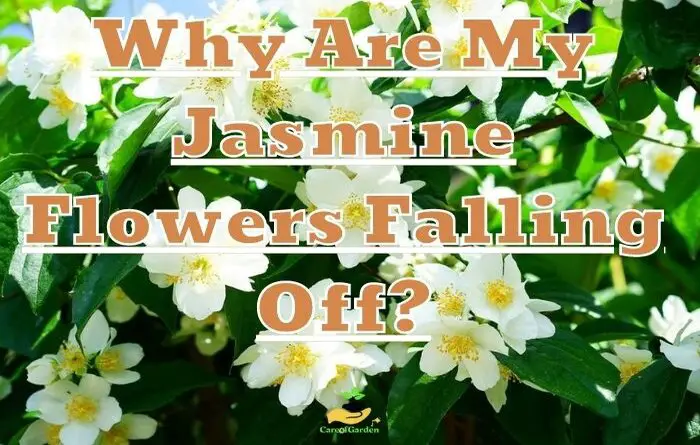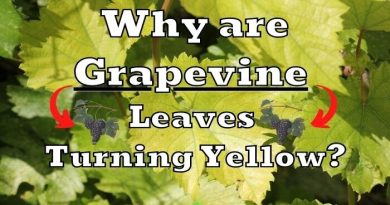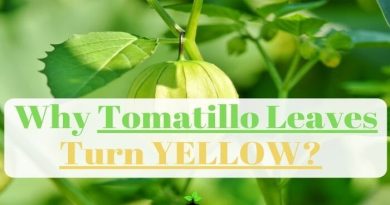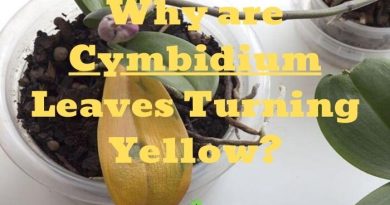Why Are My Jasmine Flowers Falling Off? (Quick Answer Here)
Ever walked into your garden and saw your jasmine flowers falling off, lying like snowflakes on the ground, and wondered why it was happening?
It can be quite disheartening to see the delicate jasmine flowers fall from your beloved plants, and you may wonder what you’re doing wrong. So trying to figure out why this is happening can be a daunting task.
Jasmine flowers are falling off for a variety of reasons, including environmental stress, lack of pollination, and nutrient deficiencies. Environmental stressors such as temperature fluctuations, humidity, and drought can all cause jasmine flowers to drop prematurely. If jasmine is not properly pollinated, it may also drop its flowers. Nutrient deficiencies, particularly in nitrogen, potassium, and phosphorus, can also lead to flower drop.
If you have jasmine flowers that are drooping or falling off their stems, there may be some simple answers to your problem.
1. Overwatering
Jasmine plants like a regular amount of water, but watering means their roots aren’t getting enough oxygen. As a result, the jasmine becomes stressed and triggers it to drop its flowers.
Additionally, overwatering can cause root rot, which can also lead to flower drop.
Treatment
Make sure you are only watering your jasmine when the top two inches of soil are dry. You should also make sure your jasmine is planted in well-draining soil and in a location that doesn’t get too much rain or standing water.
Adding a moisture meter to your Jasmine planter can help you determine when it needs water and when it has had enough.
2. Poor Sunlight Conditions
Jasmine is a sun-loving plant that requires at least 6 hours of sunlight each day , and without the right amount of direct sunlight, it won’t be able to thrive.
Jasmine needs energy from the sun to produce blooms. If it isn’t receiving this much sun, it can cause the flowers to fall off.
Jasmine needs bright, indirect light to flower. Protect it from hot, direct summer sun. Once the flower buds have sprung up, do not move the jasmine. In fact, changes in light, even when turning the plant – can cause buds and flowers to drop.
Treatment
If your jasmine not getting enough sunlight, moved the plant, or if any new structures are blocking its path of light. Check for any nearby trees that could be casting shadows onto your jasmine and adjust accordingly.
Ensuring your jasmine is getting enough light will help stimulate blooming and keep its leaves healthy and vibrant!
3. Environmental stress
Environmental stress is one of the most common reasons for jasmine flowers to fall off prematurely. Jasmine plants are sensitive to changes in temperature, humidity, and light conditions, and when exposed to stressors, the plant may drop its flowers as a protective mechanism.
The most common cause of this problem is a combination of warm days and cold nights. Windy weather causes your plants to wilt or fall off.
Rainfall and frost will also contribute to the demise of your jasmine plants if they are not watered properly. Another major problem is high humidity levels in your homes.
| Types of Environmental Stress | Symptoms | Prevention Tips |
|---|---|---|
| Extreme temperatures | Exposure to temperatures above or below (60-75°F) can cause the buds to drop off. | Jasmine plants thrive in moderate temperatures between 60-75°F (15-24°C). Protect it from sudden temperature changes. |
| Changes in humidity | Jasmine will dry out and lose its flowers. If the air is too dry, jasmine may not be able to absorb enough moisture, causing the flowers to dry up and fall off. | To bloom properly, jasmine requires a humidify between 40% to 60%. |
| Drought conditions | Prolonged periods of drought causes jasmine to drop its flowers. | When top inch of soil feels dry to the touch you need to water jasmine. |
| Exposure to direct sunlight | Exposure to direct sunlight can cause stress to the jasmine plant which leads to flowers falling off. | Provide bright but indirect sunlight and avoid exposure to direct sunlight. |
Treatment
But how do you protect your plant from temperature changes and shock? Here are two easy ways:
- Make sure to shelter your jasmine during winter months, as cold temperatures can cause buds to drop off.
- When watering your plants, use lukewarm water instead of cold water. This way you won’t give it a cold shock when you fill-up the watering can.
If the temperature or humidity is too low, the jasmine buds may fall off. To ensure that your plant is in the right environment, keep it in a warm and humid location, such as a bathroom or near a humidifier.
4. Nutrient Deficiencies
The fourth reason for dropping jasmine blooms could be due to a nutrient deficiency in the soil. Jasmine loves an equal balance of nitrogen, phosphorus, and potassium.
These nutrients are essential for growing healthy jasmine flowers and a lack of one or more of them can lead to the dropping of buds or blooms.
Table with common nutrient deficiencies that can cause jasmine flowers to fall off:
| Nutrient Deficiency | Jasmine Symptoms | Treatment |
|---|---|---|
| Nitrogen | Stunted growth, resulting in reduced flower production and premature flower fall. | Apply nitrogen-rich fertilizer or compost. |
| Phosphorus | Poor root growth, reduced flower production, and smaller flowers. | Apply phosphorus-rich fertilizer or bone meal. |
| Potassium | Browning of leaf edges, reduced flower production, and weak stems, which can lead to premature flower drop. | Apply potassium-rich fertilizer or compost. |
| Calcium | New leaves may be distorted or stunted. Older leaves may have brown or black spots and may fall off. | Amend soil with lime or gypsum to increase soil calcium levels. |
| Magnesium | Yellowing of leaves and reduced flower production. Flowers may fall off. | Fertilize with a magnesium-rich fertilizer or apply Epsom salt as a foliar spray. |
Treatment
To make sure that all the right nutrients are present in the soil, you can use fertilizers specifically designed for jasmines.
This can be done around every two weeks while they are actively growing during the spring and summer months – this will help to ensure that your jasmine has all the nutrients it needs to stay healthy and vibrant!
5. Aphids, Other Insects and Pests
Another reason your jasmine flowers may be falling off is because of insects, pests, or other critters. Aphids are one of the most common culprits of this—they are tiny green bugs that suck the sap from the stem, causing flowers to wilt and eventually fall off.
Aphids aren’t the only insects that can contribute to flower drop—weevils, slugs, mealybugs, spider mites, and scale insects can also cause damage to your jasmine plants. All of these insects feed on the leaves and stems, making them weak enough for the flowers to break off easily.
If you often find small critters crawling on your plants or see other signs like discoloration and wilting or damaged foliage, it’s worth taking a closer look. Insects such as thrips and whiteflies also weaken your Jasmine plant’s stem.
Table with some common pests that can cause jasmine flowers to fall off
| Pest | Description | Treatment |
|---|---|---|
| Spider mites | Tiny, reddish-brown pests that feed on jasmine sap and lead to flowers falling off. | Spray the plant with insecticidal soap or neem oil. |
| Whiteflies | Small, winged insects that feed on jasmine sap causing leaf and flower fall. | Use sticky traps, apply insecticidal soap or neem oil. Encourage natural predators like ladybugs. |
| Mealybugs | Small, white insects that secrete a sticky substance and cause flower drop. | Remove infected parts of the plant, use insecticidal soap or neem oil, or introduce natural predators such as lacewings. |
| Scale insects | Small, hard-shelled pests that attach themselves to the plant and suck sap causing yellowing and browning of leaves and flowers. | Use a cotton swab dipped in rubbing alcohol. |
Treatment
To protect your jasmine from pests and diseases, make sure you inspect the plants regularly and treat them if necessary. Check for signs of fungal infections or insect damage, keep the soil moist but not soggy, and ensure good air circulation in the plant’s environment.
You can take steps to get rid of pests like weevils and aphids, such as using insecticidal soap or horticultural oil sprays or introducing beneficial predators like ladybugs which will feed on the pests but won’t harm your jasmine flowers.
6. Pruning Mistakes
Pruning done at the wrong time or too aggressively can cause jasmine flowers to fall of prematurely. Especially if you start pruning during the growing season you risk removing developing flower buds and result in reduced flower production or premature flower drop.
Pruning can cause jasmine flowers to fall off prematurely if it is done at the wrong time or too aggressively. Jasmine plants should be pruned in the late winter or early spring, just before the new growth begins.
It is recommended to wait after the jasmine plant has bloomed before giving it a major prune.
It’s also important to avoid pruning more than one-third of the plant’s total growth at a time, as this can shock the plant and cause stress, which can also lead to flower drop.
Treatment
If you prune your plant at the wrong time, it may disrupt the growth cycle and cause the flowers to drop. To prevent this, only prune your plant after it has finished flowering, and only remove the dead or damaged branches.
To prevent jasmine flowers from falling off, it is essential to prune the plant regularly. Pruning helps to remove dead or damaged parts of the plant and promotes new growth.
It can also help to improve the overall health of the plant, which can lead to an increase in flower production. When pruning, make sure to use sharp, clean tools and to cut just above a leaf node.
7. Lack of pollination
Lack of pollination is the final reason that could cause a jasmine flower to fall. Transferring pollen from the male to the female portions of a flower is the process of pollination, which results in fertilization and the growth of fruit. Flowers won’t develop fruit without pollination, and they’ll eventually wilt away.
Insects like bees, butterflies, and moths frequently spread pollen from jasmine flower to flower in order to reproduce. Your jasmine’s flowers could fall off if there aren’t enough insects (pollinators) in the region to pollinate it.
You can try first to pollinate the jasmine flowers manually. To transfer pollen from the male to the female portions of the flower, use a little brush or cotton swab. Planting flowers like lavender, marigolds, and sunflowers in your garden will also draw pollinators like bees.
It’s also essential to note that some jasmine plants are self-pollinating, meaning they do not require pollinators to produce fruit. However, even self-pollinating plants may benefit from occasional manual pollination to increase fruit production.
Conclusion
If in doubt about what’s causing the problem, contact a professional gardener or landscaper who can assess the health of your plants and advise on the best course of action. With some regular care and attention, your Jasmine plants will be blooming again in no time!




